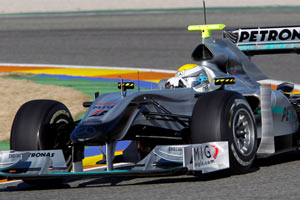JohnsonsEvilTwin wrote:I agree it is odd.
There are 2 explanations, but only Mercedes will know for sure. Some say its a passive device, others that its driver-activated.
From the looks of it, I would say passive. If it did go up through the Endplates that a few websites have know mentioned, the air would take such a contrived path that by the time it reaches the point of blowing the wing it would merely be a puff.
I was skeptical at first, but then one day I was looking at pressure loss in plate heat exchangers on the web: what I saw was that the pressure loss was very small. This is because the cross-sectional area between the plates were many times more than the inlet pipe. The path amongst the plates are contrived, but due to sheer magnitude of the cross sectional area (remember we are taking about many plates here), each infinitesimal fluid stream has a clear path. There will be dead spots in there of course, but they are not part of the working part of the fluid. So I still consider routing of air through the end-plate a possibility.

In the case of the MGP-W01, I am still not sure where how the routing would be done if it was absolutely true. What I can say is that they need an incredible amount of hollow cross-sectional area in the two end-plates and whatever rigid duct they have running beside the engine or where ever.
I say this just to stimulate some pondering but in all honesty my common sense and evidence indicate to me also that the car is a passive system. It doesn't hurt to say that it actively controlled though.

Hey I just remembered! Schumcher was complaining about the F-duct not working at some stages in the Suzuka race. This is another shred of evidence that the system could be passive.




